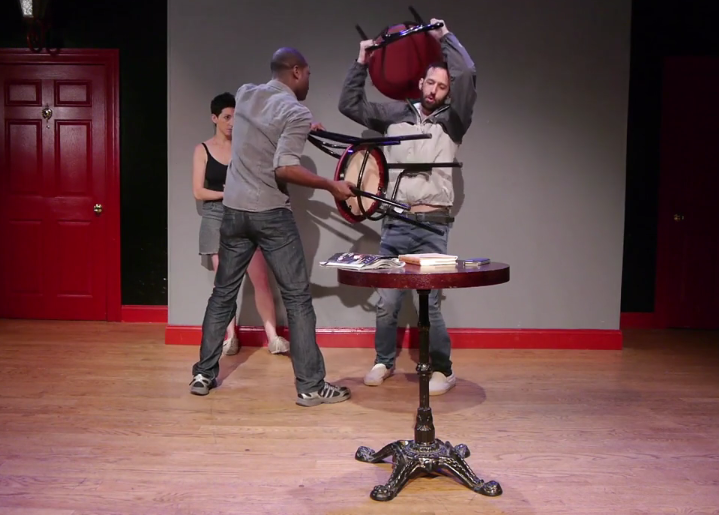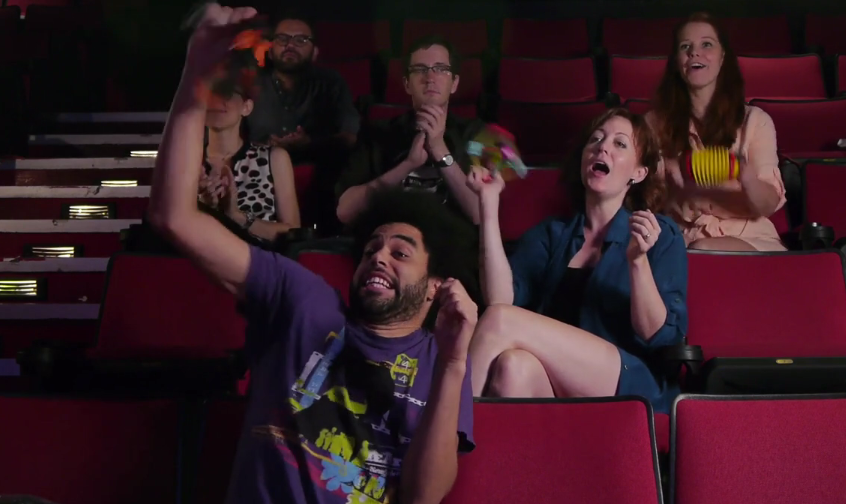Should I stay or should I go
What's the difference between reading a script out loud and actually "doing" a play? Some people might say it's the magic of theatre. The more practical among us would say it's actually embodying the text---not only saying the lines, but moving around the stage as if the scene is real. These movements are the blocking: that careful choreography of actions on the stage. While this particular kind of blocking has nothing to do with defending yourself from attack, the term may actually refer to wooden blocks.
Theatre legend has it that Victorian dramatists like Gilbert and Sullivan actually staged their shows using a miniature model of the theatre and squares of wood to represent the actors. Hence, blocking. These days, most directors block the show together with the actors during the rehearsal process. The stage manager writes down when the actors move stage left or stage right, upstage or downstage, enter or exit, sit, stand, faint, kiss, and all the thousands of other moves actors can make.
Sometimes, if the play is brand new, those notes are included in the published version of the play. You know all those italicized stage directions in your Sam French editions? Those may not have been written by the playwright---they're just the original blocking. Blocking can be contentious. Sometimes an actor might not understand why he does a specific bit of blocking, leading to the classic actor question, "What's my motivation?" An actor's blocking, just like her lines, has to appear natural and spontaneous, rather than suggesting "I'm moving now because the director told me to." Sometimes actors feel that a scene is not blocked to their best advantage (or the play's best advantage). It's ultimately up to the director to change (or not change) the blocking. As a show goes into tech, the blocking becomes particularly important.
The lighting design, for example, is based partly on where the actors are at any given moment. If the actors aren't consistently in those places, they risk doing their scenes in the dark. So the next time you watch a play, don't just listen to the lines. Appreciate the blocking! It's as carefully memorized and executed as the text itself, and the words and the blocking together make a play come alive.
--- Rachel Carpman
This video was created by TDF and Lesser America.

